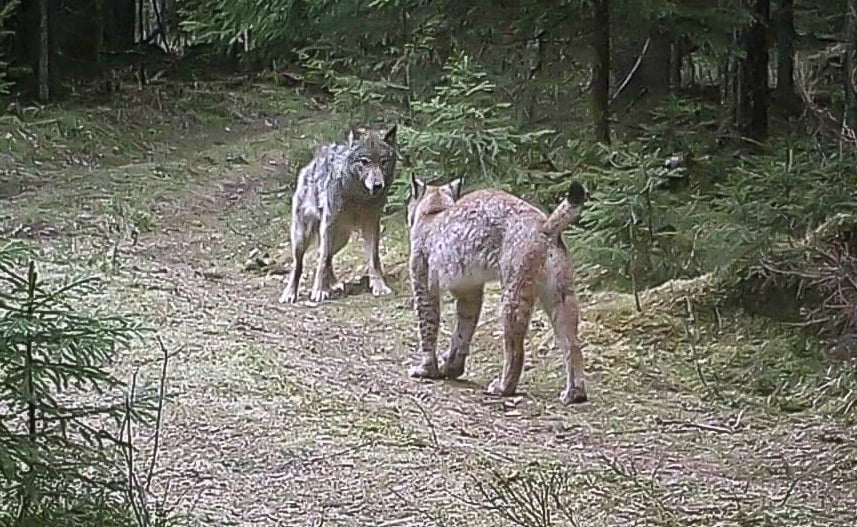A study carried out by Japanese scientists at the Department of Psychology, Graduate School of Letters, Kyoto University, Japan, in 2015 found that domestic dogs evaluated people who interact with their owner. If these third parties were not helpful towards their owner they treated them in a way which indicated that they felt the person was hostile or less than friendly. This indication came from the fact that the dogs were less willing to accept food from the person who had failed to help their owner when help was requested.
 |
Dogs evaluate third parties and cats don't. Pic in public domain. Words added
by MikeB on PoC. |
I DISCUSSED THE STUDY IN A DIFFERENT WAY IN ANOTHER ARTICLE. CLICK HERE TO READ IT IF YOU WISH.
In 2021, the same or similar team of scientists headed by the same scientist, Hitomi Chijiiwa, carried out the same test on domestic cats. In summary, they found that "cats might not possess the same social evaluation abilities as dogs". The cats did not react as dogs had to people who did not help their owner by refusing to take food from them.
I will explain the study again and further comment on it below. They say that humans evaluate other humans based upon their interactions between third parties. I interpret this as meaning that people can look at two other people interacting with each other and by those interactions they can assess the character and behavioural traits of those people.
Dogs were also able to assess in a less sophisticated way (in my view) the character traits and behaviour of third parties. For both the cat and dog experiments they used the same procedure. They had the cats watch their owner try and unsuccessfully open a transparent container to take out an object inside and request help from the person sitting nearby. This person was told to either help when requested or not help when requested.
There was a third person sitting nearby who they describe as "passive (neutral) person". This person sat on the other side of the owner under both circumstances i.e. when the other person helped and when they did not help.
After both interactions by the actor who helped and didn't help with the owner, the actor and the passive person offered a piece of food to the cat. The scientist wanted to record from which person the cat took the food. They carried out four trials and noticed that the cats "showed neither a preference for the helper nor avoidance of the non-helper".
On this basis, they considered that cats "might not possess the same social evaluation abilities as dogs" as mentioned above. They do suggest that 'further work on cats' social evaluation capacities needs to consider ecological validity, notably with regard to the species' sociality'.
My comments and thoughts
My comments: I'm not going to read the entire study but simply pass my comments on these findings as stated in the study abstract. You might like to comment yourself. I would really like that actually.
The argument is that dogs have been bred to work with and associate with people. This has occurred for perhaps up to 30,000 years. This is when dogs were first domesticated, it is believed. And dogs have often been working dogs. And in the dog-human relationship they work with people so there is this naturally close, working connection which has allowed the dog to read people and evaluate them.
Conversely, the domestic cat has been domesticated for about ten thousand years, it is believed. It may be longer, as much as fourteen thousand years but this is still work in progress. The cat's role is as a companion although initially at the point of domestication they were working cats rooting out rodents and keeping the population down on farms. However, for many thousands of years their role is to entertain and provide companionship.
Further, the domestic dog is essentially a pack animal because their wild origins are the grey wolf. Pack animals look after each other and communicate with each other. The domestic cat, in contrast is essentially a solitary creature, living and surviving alone. Although their evolution during domestication has resulted in them becoming more sociable. Notwithstanding that advance in sociability, they still lack the skills to read behaviour patterns and traits of humans when watching them interact with their owner.
Ultimately, it comes down to the length of domestication of cats and dogs and their role in the lives of humans. This background has created the differences in results from this study in my opinion. What do you think?
Details of the study:
Cats (Felis catus) Show no Avoidance of People who Behave
Negatively to their Owner
Hitomi Chijiiwa1, Saho Takagi1, Minori Arahori, James R. Anderson, Kazuo Fujita, &
Hika Kuroshima. Department of Psychology, Graduate School of Letters, Kyoto University
2
Japan Society for the Promotion of Science. Corresponding author (Email: chijiiwa.hitomi.5m@kyoto-u.ac.jp)
Published online: Animal Behavior and Cognition journal.



































